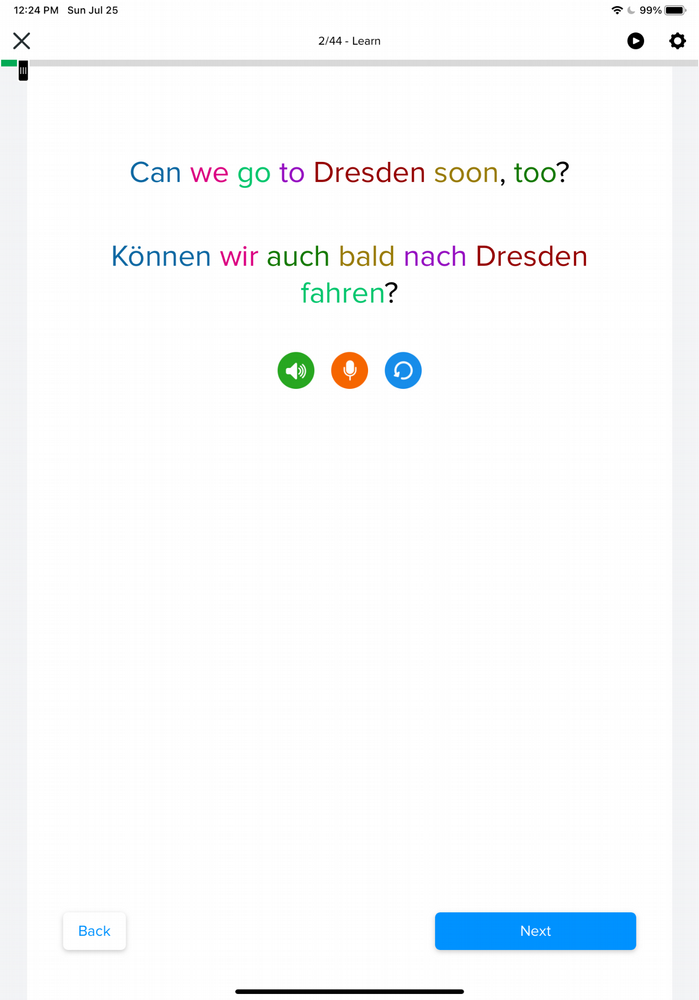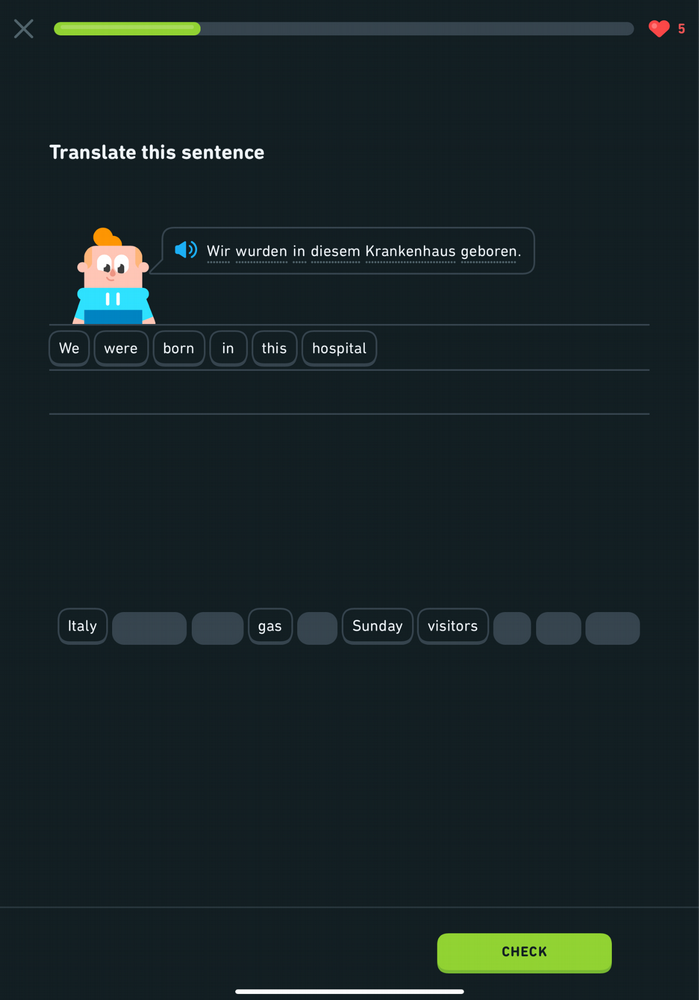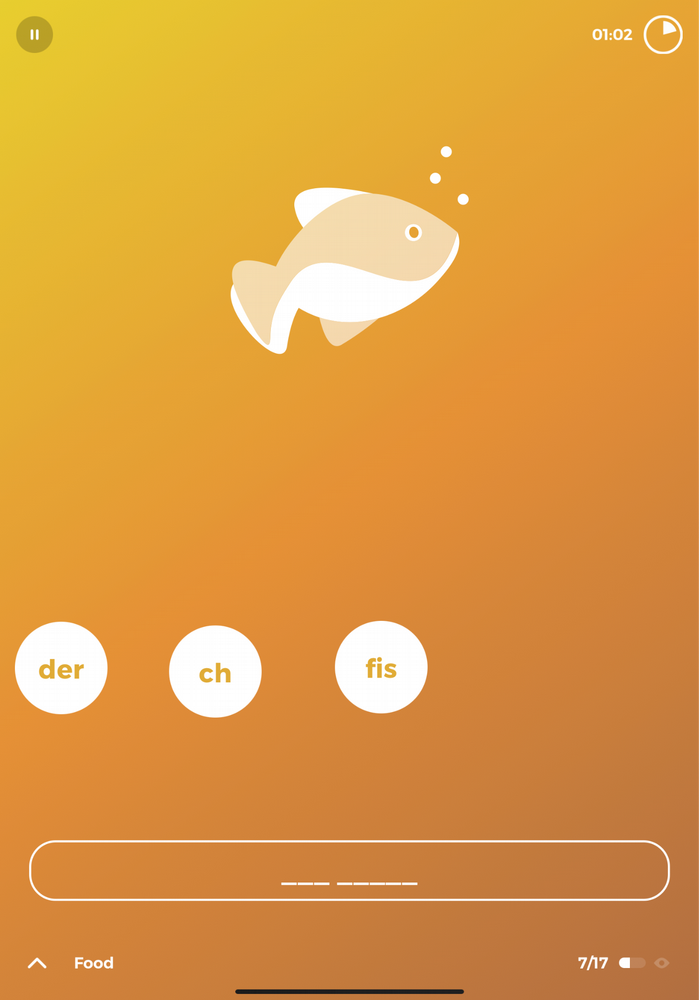
Picking up German can be tricky, but we are lucky to live in a time when language learning isn’t consigned to classrooms, tutors, or dry, confusing textbooks. Thanks to language learning apps, learning German can be fun, easy, and on the go. Not to mention, you can choose when and for how long you want to practice when using a German app. No more trying to fit classes, online or in-person into our schedules, or hauling a German handbook around, now German is just a tap away.
Now the only issue is there are a lot of apps to choose from and a lot of them only cater to beginner learners. What are the top intermediate German apps? Well, I took a look at a few and took note of their strengths and weaknesses when it comes to advancing German learning for an intermediate student. Here’s what I found out:
(Photo by Arthur Lambillotte)
Mango Languages

Mango Languages German lessons is an intermediate German app that focuses primarily on German-speaking skills by walking you through phrases in small chunks and then putting them together.
Mango feels like a more in-depth German app as it begins each lesson by describing the learning goals and outlining what the lesson will cover, unlike a lot of other apps that just jump right in.
The lessons are essentially a series of voice-acted slides or flashcards in which the app will ask you how something is said in German or what a German phrase means and you are given a time limit in which to speak your answer aloud. There is no microphone input for the app to check if you give the correct answer — you have to use the honor system — but there is an option to compare a voice recording of yourself to a native German speaker speaking the answer so you can make sure your pronunciation is correct. This makes it an excellent intermediate German app if one of your big goals is to make your pronunciation sound native!
Mango also sprinkles in grammar explanations between vocabulary and speaking exercises, and I found them both cogent and concise. So if you are interested in why certain words are said the way they are, or why phrases are ordered in a certain way, Mango can help with that.
As an intermediate German app it’s not very fun, as the lessons are equivalent to what you might encounter in a classroom, but it does a good job at focusing on speaking and conversational German skills while also teaching grammar and a touch of culture.
Key features:
- Speaking and pronunciation oriented
- Great grammar explanations
- Comprehensive
Duolingo

Duolingo, one of the more well-known language learning apps available, turns language learning into a game complete with competitions, rewards, different levels of difficulty, fun-to-look-at graphics, and more.
There are two modes of learning: Lessons and Stories.
Lessons are the older and more interactive mode of learning, in which you are prompted with multiple choice questions, asked to construct a set German phrase out of a word bank, translate a phrase to or from German, type out what you hear, or repeat a German phrase aloud.
Stories is a newer mode in which voice actors read a story aloud to you in German, as the text appears on the screen. You can click on any German word that you don’t know for the definition, but there is no translation appearing simultaneous to the German text, so it’s a listening exercise. At set points in the story, the reading will pause and provide you with a reading comprehension question (usually multiple choice) and the question will also be posed in German.
Both stories and lessons provide the user with “experience points” which contribute to achieving goals, streaks, and competing with other users in the leaderboards. Duolingo makes an effort to build a language learning habit, especially if you’re a competitive or goal-oriented person. It also means it can be obnoxious if you forget to open the app for a day, as it reminds you that you lost your streak or are behind in your learning etc.
In terms of Duolingo’s viability as specifically an intermediate German app, I’d say it does a decent job. It’s slightly more beginner oriented. There are parts where vocabulary is presented without valuable information like what part of speech it is because it expects you to be a beginner, and it doesn’t want to overwhelm you. Even the most final units don’t go very in-depth, as the app is focused more on learning conversational German.
Key features:
- Language learning with game mechanics
- Integrated habit building
- Conversational focus
Clozemaster

Clozemaster uses a fill-in-the-blank model to teach German. As a user, you are provided a German phrase with a blank in it, and the complete translation in English without the missing word. Then your challenge is to find the German word that will close the gap.
Depending on what difficulty level you’re interested in, you can either choose to answer sets via multiple-choice, and select the correct word from a bank of four, or type the word in by hand without a vocabulary bank.
This model of learning is great for picking up new vocabulary in context since the surrounding German phrase combined with the translation clue you into what the missing word means. And after you complete the sentence, it’s read aloud in German, so you can pick up on the pronunciation as well.
Further, each correct answer provides you with points that bring you closer to leveling up and raise your position in the leaderboards — a fun and competitive way to incentivize learning, in bite-sized chunks with no pressure to go over your desired amount of practice.
It succeeds as an intermediate German app because it doesn’t teach so much as drop you in — it’s immersive and therefore better for intermediate learners who already have some knowledge and can use context clues to fill in the gaps. It’s especially good for teaching unique turns of phrase and idioms in an intuitive way. If you’re a first-time Clozemaster user, I recommend starting with the multiple-choice mode and then moving into the typing mode so you can easily pick up the vocab it expects you to learn and then test yourself on it.
Key features:
- Fill-in-the-blank model
- Immersive and intuitive
- Gamification
Rocket Languages

Rocket German is an intermediate German app which relies primarily on a “repeat after me” model. Each lesson consists of many audio clips that the user will play and then be asked to repeat into the microphone to be checked for correctness. These audio/speaking exercises are interspersed between blocks of text explaining the grammar of the phrases you are learning to say.
The grammar lessons are not voice-acted or otherwise read aloud to you, and they’re on the long side, so if you’re looking for an entertaining experience, this isn’t it. Though it is very in-depth, so if you don’t mind dryness you’ll learn quite a bit from the grammar section.
Following the grammar segment, there is a culture section (which is also has speaking exercises sprinkled in) that describes some of the cultural nuances of the words and phrases you learn.
Each lesson ends with a series of review assignments, which are essentially variations on the listen and repeat model. First flashcards, then listen-and-repeat, then writing out German phrases that you hear, then speaking phrases in German based only on the English translation presented to you, and finally a quiz which is unique because it is multiple choice.
As an intermediate German app, Rocket languages German lessons are in-depth and speaking focused. It’s best for those practicing speaking skills, and learning the grammar behind what it teaches.
Key features:
- Listen-and-repeat model
- In-depth grammar and cultural lessons
- Straightforward
Drops

Drops is an intermediate German app which will appeal most to visual and tactile learners. It operates by asking its users to drag and drop images or words around the screen in a variety of exercises to teach them to you. Also, all the vocabulary has voice over when it appears.
Visually, it’s very appealing. The illustrations and design of the app are nice to look at and make the experience more fun. And the activities themselves aren’t boring either. Out of all the apps here, it has the most truly game-like exercises. For example: you might see with an image representing a German word you’ve learned and a grid of letters, and from those letters you have to spell out the relevant vocabulary by only tracing through adjacent letters.
As an intermediate German app, I can’t say it’s the most successful. There are no grammar lessons as far as I can tell and the app seems designed to teach only vocabulary, no phrases or anything else. The fun, game-like qualities that it has as well as the content that it teaches makes it seem best for those closer to a beginner level rather than intermediate learners. Tech-savvy children (maybe ages 8-12) might enjoy it best.
Key features:
- Vocabulary focused
- Gamified
- More beginner oriented
Babbel

Babbel is an intermediate German app that uses a combination of teaching slides and various activities to teach you German vocabulary and phrases. There is both an option to use voice recognition or to simply repeat words and phrases without microphone input to check your correctness.
The German lesson begins with vocabulary. The app will show you a slide with the word in German, a photo or image representing that word, a translation of the word, and a voice-over speaking that word aloud. It will prompt you to repeat the word with each slide. Then it begins to ask you to complete activities such as fill-in-the-blank or multiple choice questions that include the vocabulary and phrases that you just learned. Thereby, it attempts to engage your memory on several levels, audio, visual, written, and spoken, to help you pick up new words and phrases.
The best part of Babbel is probably that it is forgiving when it comes to typos. As a notorious typo maker, myself, I often misspell things in my rush to type them even if I did in fact know how to spell the word in question. Babbel will let you know that you made a typo and show you the correction, but won’t make you start over or detract from your progress in any other way, as some other apps do.
Babbel, as an intermediate German app, is successful because it progresses from a simple task — repeating phrases and vocabulary — to utilizing those in easy and then more difficult activities, which makes the learning feel intuitive. The lessons are also on the longer side, however.
Key features:
- Appeals to many types of learners
- Intuitive
- Forgiving when it comes to mistakes
Clozemaster has been designed to help you learn the language in context by filling in the gaps in authentic sentences. With features such as Grammar Challenges, Cloze-Listening, and Cloze-Reading, the app will let you emphasize all the competencies necessary to become fluent in German.
Take your German to the next level. Click here to start practicing with real German sentences!

